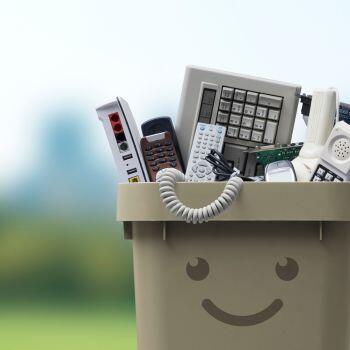Electronic waste, or e-waste, refers to discarded electronic devices and components. As technology continues to evolve at a rapid pace, the generation of e-waste has become a growing concern due to its harmful impact on the environment and human health. This article explores various strategies for reducing e-waste and promoting sustainable electronics usage.

Table of Contents
Understanding the Impact of E-Waste
E-waste contains hazardous materials such as lead, mercury, and cadmium, which can contaminate soil, water, and air, posing serious health risks to humans and wildlife. Additionally, the improper disposal of e-waste contributes to the depletion of valuable resources, such as rare earth metals, which are finite and increasingly scarce.
1. Responsible Consumption
a. Buying Wisely:
Consumers can play a crucial role in reducing e-waste by making informed purchasing decisions. Opting for energy-efficient and durable electronics that have a longer lifespan can significantly decrease the generation of e-waste. Additionally, choosing products with eco-friendly certifications, such as Energy Star or EPEAT, ensures that the devices meet specific environmental criteria.
b. Prioritizing Repairability:
Selecting devices that are easy to repair can extend their lifespan and reduce the need for replacements. Consumers should look for products with replaceable components, accessible designs, and availability of spare parts.
2. Proper Disposal and Recycling
a. E-Waste Recycling Facilities:
Recycling is a key component in the fight against e-waste. Many municipalities offer e-waste collection services or have designated drop-off locations where electronics are properly disposed of or recycled. These facilities recover valuable materials from old electronics and ensure the safe handling of hazardous substances.
b. Manufacturer Take-Back Programs:
Several electronics manufacturers and retailers offer take-back programs, allowing consumers to return their old devices for recycling. Participating in these programs ensures that e-waste is managed responsibly and helps in conserving natural resources.
3. Extended Producer Responsibility (EPR)
EPR is a policy approach that holds manufacturers accountable for the entire lifecycle of their products, including end-of-life management. By implementing EPR policies, governments can encourage producers to design eco-friendly products, use sustainable materials, and establish efficient recycling systems.
4. Promoting Repair and Refurbishment
a. Right to Repair Movement:
The Right to Repair movement advocates for legislation that enables consumers and independent repair shops to fix electronic devices. Access to repair manuals, diagnostic tools, and affordable replacement parts can empower users to repair their electronics, reducing the reliance on new products and curbing e-waste generation.
b. Refurbished Electronics Market:
Purchasing refurbished electronics is an excellent way to minimize e-waste. Refurbished devices are pre-owned products that have been restored to their original condition, offering a cost-effective and environmentally friendly alternative to new gadgets.
5. Raising Awareness and Education
Educating the public about the environmental and health impacts of e-waste is crucial for fostering responsible consumption and disposal habits. Awareness campaigns, workshops, and educational programs can help promote sustainable electronics usage and encourage recycling practices among consumers.
6. Technological Innovations and Sustainable Design
a. Eco-Design:
Innovations in product design can contribute to waste reduction by focusing on sustainability. Eco-design involves creating products with minimal environmental impact, using renewable materials, reducing energy consumption, and enhancing recyclability.
b. Circular Economy:
One major step forward in the advancement of e-waste recycling is the adoption of a circular economy model can transform the way electronics are produced, used, and disposed of. This model emphasizes the importance of designing products for longevity, repairability, and recyclability, ensuring that resources are utilized efficiently, and waste is minimized.
7. Legislation and Global Cooperation
Strengthening e-waste regulations and fostering international collaboration are essential for addressing the global e-waste crisis. Harmonizing e-waste management standards, enforcing proper disposal practices, and facilitating knowledge exchange can help in developing effective solutions to mitigate the impact of e-waste.
Final Thoughts on Reducing E-Waste
Reducing e-waste is imperative for protecting the environment and conserving natural resources. Through responsible consumption, proper disposal, sustainable design, and global cooperation, it is possible to curb e-waste generation and move towards a more sustainable and eco-friendly future. By embracing sustainability in our electronics usage, we can contribute to the well-being of our planet and future generations.
This article provides a comprehensive overview of the strategies to reduce e-waste, but it is the collective responsibility of consumers, manufacturers, policymakers, and the global community to implement these practices and create a sustainable electronic ecosystem.

